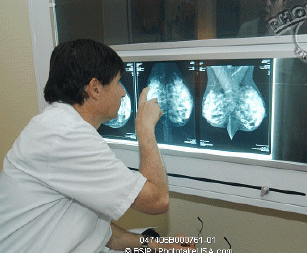Recent studies on breast cancer have revealed a multitude of insights, developments, and advancements related to preventing and treating this disease. This overview focuses on selected studies that have been recently published or were presented at the American Association of Cancer Research (AACR) 2010 annual meeting.
MANAGING TREATMENT-RESISTANT BREAST CANCER
New research takes multiple approaches to hard-to-treat breast cancers. In studies presented by teams of scientists from Georgetown Lombardi Comprehensive Cancer Center, researchers worked to formulate novel therapies based on a clearer understanding of treatment-resistant breast cancer cells.
“In our lab, we’re working on two approaches for overcoming breast cancers that are treatment resistant,” said Robert Clarke, PhD, DSc, one of the researchers and a professor of oncology and physiology and biophysics at Lombardi. “We’re after what works, even if [it] means taking the longer road. So, while it can be easier to find new combinations of existing drugs as a short-term approach, if we need to identify new targets and new drugs to get the best outcome for patients in the long term, then that’s what we should be doing” (AACR 2010).
A second approach was explored by several researchers who presented the results of combination drug experiments designed to potentially serve as treatment for patients with resistant breast cancer.
In one study, researchers discovered that a combination therapy comprising trastuzumab and two investigational agents, pertuzumab and an antitubulin cytotoxic agent (DM1), was effective against breast tumors resistant to medical treatment (AACR 2010). In a second study, researchers reported that a taxane-bevacizumab combination appeared to be effective against hard-to-treat triple-negative breast cancer (AACR 2010). According to a third study, presented by Neil O’Brien, PhD, a postdoctoral scholar in hematology/oncology at the University of California-Los Angeles, their findings suggests that treatment with lapatinib might be effective against breast cancer that has developed resistance to trastuzumab (AACR 2010).
NEW FINDINGS IN CANCER GENOMICS
The identification of certain genes may help doctors offer patients tailored early recognition programs and individualized therapies; and in three recently presented papers, researchers investigated genes that confer high risks for breast cancer.
In one study, published in Nature Genetics (2010;42(5):368-369), researchers reported a 60% to 80% risk for breast cancer in women with mutations of the gene RAD51C. “These results reinforce our assumption that various rare gene mutations contribute to hereditary breast and ovarian cancer,” said lead investigator Alfons Meindl of the Technische Universitaet Muenchen.
In a second study, researchers at Fox Chase Cancer Center found that a protein called NEDD9 is critical in the formation of breast cancer tumors. In mice with aggressive breast cancer, researchers found that 89% of those with the NEDD9 gene but only 29% of mice without the gene developed tumors over an 18-month period. “There is a lot of research describing contributors to cancer formation, but it is always truly exciting when studies show that the loss or absence of something prevents cancer from occurring,” said Joy Little, PhD, a postdoctoral fellow who presented the findings at the AACR 2010 annual meeting.
A third study comparing genomic alterations in breast cancer cells found that the alterations affected genes that function as either oncogenes or tumor suppressors (AACR 2010). “If we find markers that can be significantly associated with patients [who] develop auxiliary metastasis, we can check for these markers at an early stage of the cancer management,” said Luciane Cavalli, PhD, an assistant professor of oncology at Georgetown Lombardi Comprehensive Center.
BIOMARKERS OF RISK
Although recent research has indicated that breast cancer risk factors differ among ethnic and racial populations (Hines LM et al. Cancer. Apr 26, 2010 [Epub ahead of print]), biomarkers are increasingly being used by researchers to help determine a women’s risk for breast cancer and develop strategies for prevention.
In several studies focusing on breast density change, teams ofresearchers found that increased breast density as seen on a mammogram is linked to an increased risk of breast cancer. “These abstracts strengthen the observation that high breast density is associated with increased risk for breast cancer, and they strengthen the hypothesis that under some conditions, reducing breast density may be associated with reduced risk for breast cancer,” said Carol Fabian, MD, professor of medicine in the division of clinical oncology and director of the Breast Cancer Prevention Center at the University of Kansas Medical Center (AACR 2010).
When another group of researchers, led by Christopher Li, MD, PhD, from the Fred Hutchinson Cancer Research Center in Seattle, sought to discover and validate blood markers that could potentially be used for the early detection of breast cancer, they found that levels of epidermal growth factor receptor (EGFR) were significantly elevated in the blood of women within 17 months prior to their diagnosis (AACR 2010). “Our results suggest that there may indeed be detectable changes of proteins in blood within 2 years of making a clinical breast cancer diagnosis,” Dr. Li stated. “Identification of these proteins could have a major impact on our ability to detect breast cancer early, when it is most treatable.” ONA
